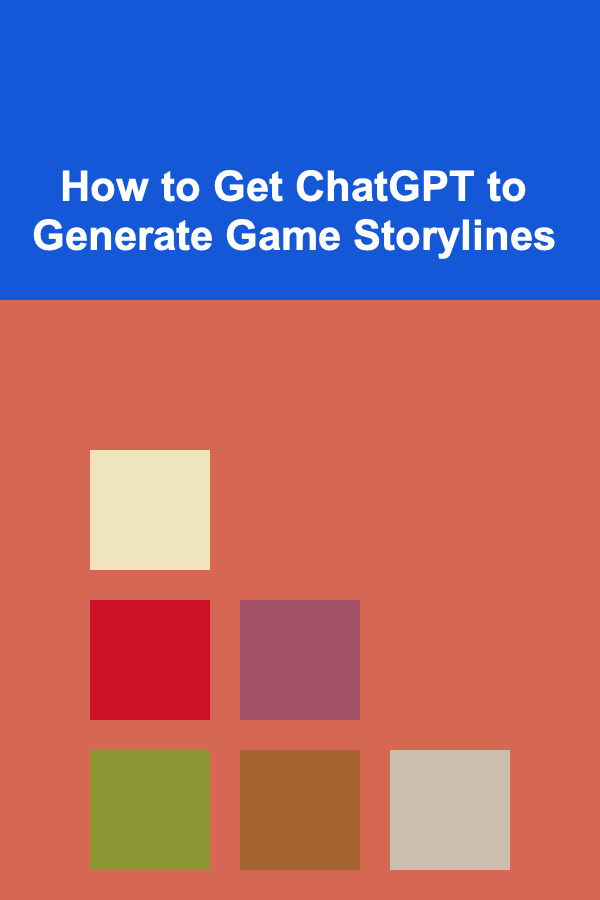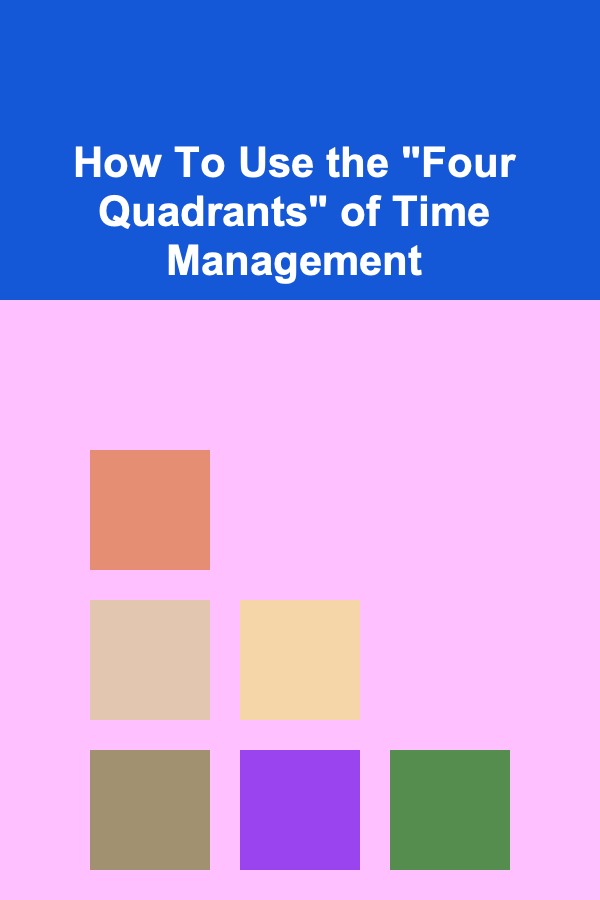
How to Get ChatGPT to Generate Game Storylines
ebook include PDF & Audio bundle (Micro Guide)
$12.99$11.99
Limited Time Offer! Order within the next:

Storytelling is a vital aspect of video game design. A well-crafted storyline can engage players, immerse them in the game world, and give them a reason to care about the characters and events unfolding before them. As the video game industry grows and diversifies, the demand for compelling narratives increases. However, not all developers and writers have the time, resources, or creative spark to come up with engaging stories. This is where AI tools, like ChatGPT, can be incredibly helpful.
ChatGPT, developed by OpenAI, is a powerful language model that can assist in generating various types of content, including game storylines. By utilizing ChatGPT effectively, game designers and writers can tap into its potential to brainstorm ideas, refine narratives, and even develop entire story arcs. In this article, we'll explore how you can use ChatGPT to generate game storylines that are unique, engaging, and fit within your game's theme.
Understanding ChatGPT's Capabilities
Before diving into the specifics of generating storylines, it's crucial to understand ChatGPT's capabilities. ChatGPT is based on the GPT (Generative Pretrained Transformer) architecture, which is trained on vast amounts of text data, including books, websites, and other written content. This allows the model to generate coherent and contextually relevant responses to a wide range of prompts.
While ChatGPT excels at generating text, it's essential to remember that it operates based on patterns and associations found in the data it has been trained on. It doesn't "understand" the content in the same way humans do but can produce highly believable and structured narratives by predicting the most likely next word or phrase.
For game developers, this means ChatGPT can be an invaluable tool for generating ideas, writing dialogue, creating character backstories, or even crafting entire plotlines. However, its true power comes from being guided with the right prompts.
Step-by-Step Guide to Generating Game Storylines with ChatGPT
Here's a step-by-step guide on how to use ChatGPT effectively to generate storylines for your game.
1. Define the Game's Genre and Theme
Before prompting ChatGPT, it's essential to have a clear understanding of your game's genre and theme. A sci-fi RPG will have a very different storyline from a medieval fantasy game, so your prompt needs to be tailored to fit these contexts. If you're not sure about your game's genre, start by asking yourself the following questions:
- What kind of setting does my game take place in (e.g., fantasy, sci-fi, historical)?
- What's the tone of the game (e.g., dark, comedic, adventurous)?
- Who are the main characters, and what do they want?
- What kind of player experience am I aiming for (e.g., exploration, combat, puzzle-solving)?
Once you have a good grasp of the game's foundation, you can start crafting prompts for ChatGPT that reflect these elements.
Example Prompt:
"Create a storyline for a post-apocalyptic RPG set in a dystopian future where humanity must rebuild civilization after a catastrophic event."
2. Provide Specific Details
The more specific you are in your prompt, the more tailored the output will be. For instance, if you already have an idea for a key character or a central conflict, include those details in your prompt. You can even outline the setting, main antagonist, and other important story elements. Providing such context allows ChatGPT to weave these aspects into the story it generates.
Example Prompt:
"Write a story for a fantasy RPG in which the protagonist is a reluctant hero, a young farm boy who discovers he is the last surviving member of an ancient royal family. The story should revolve around him uncovering his heritage while trying to prevent an evil sorcerer from seizing control of the kingdom."
In this example, you've given ChatGPT a character, a central conflict (the sorcerer), and a theme (the protagonist's struggle with his destiny).
3. Ask for Multiple Plot Ideas
Instead of asking ChatGPT for just one storyline, try asking it to generate several different plot ideas. This will give you more options and allow you to choose the direction that best fits your game. Ask for different variations or twists on the core concept, and explore various character motivations or themes.
Example Prompt:
"Generate five different plot ideas for a game set in a world where magic has been outlawed. Each plot should feature a different main character and conflict but should center around the theme of forbidden magic."
This approach gives you multiple storylines to choose from and refine further.
4. Use the "Character-Driven" Approach
Another effective way to generate storylines with ChatGPT is by focusing on character development. A game storyline is often defined by the motivations, actions, and evolution of its characters. By guiding ChatGPT to focus on character-driven narratives, you can create deeply personal and engaging stories.
Example Prompt:
"Create a storyline for a detective game where the protagonist, a disgraced former police officer, is forced to work with a mysterious informant. Over time, they uncover a conspiracy that ties back to the officer's past. Include plot twists that reveal secrets about the officer's history."
Here, the story is driven by the protagonist's internal conflict and interactions with another character. This could lead to a more emotionally resonant plot that explores themes of redemption, trust, and betrayal.
5. Consider Subplots and Side Quests
In video games, subplots and side quests are just as important as the main storyline. ChatGPT can help you come up with creative side stories that enrich the world and give players a deeper sense of immersion. You can request ideas for minor characters, hidden storylines, or world-building elements that add layers to the primary plot.
Example Prompt:
"Suggest three side quests for a game about a medieval knight who must navigate a world torn by war. Each quest should involve helping a different group of people and should reveal something about the larger conflict in the kingdom."
By incorporating side quests, you can provide more content for players to explore while deepening their understanding of the game's world.
6. Develop Dialogue and Interactions
An often-overlooked part of game storytelling is the dialogue. Dialogue can reveal a lot about characters and their motivations, and it's a great way to immerse players in the world. ChatGPT is excellent for generating dialogue and NPC interactions. If you have specific characters in mind, you can prompt ChatGPT to create conversations or banter between characters.
Example Prompt:
"Write a conversation between a warrior and a mage who have just formed an uneasy alliance. The warrior is skeptical of the mage's magic, but the mage believes that they need each other to survive. Include tension, humor, and hints of past conflicts."
By crafting compelling dialogue, you make your characters feel real and relatable, which is key to engaging storytelling.
7. Refine and Iterate
Once ChatGPT generates a storyline or idea, you can refine and iterate on it. You can ask it to expand on certain elements, add more depth to the characters, or even suggest ways to integrate player choice into the narrative. Since ChatGPT works iteratively, you can guide it through different stages of refinement to ensure the final output fits your vision.
Example Prompt for Refinement:
"Expand on the plot idea where a young prince is forced into exile. Include more details about the political intrigue, his relationship with his siblings, and how the betrayal unfolds."
By continuing to refine the storyline with specific prompts, you can create a rich, multi-faceted narrative.
8. Incorporate Player Choice and Branching Paths
Many modern games offer branching storylines where player choices affect the outcome of the game. ChatGPT can be instrumental in generating ideas for such branching paths. You can ask it to suggest moments in the story where the player can make significant decisions, and how those choices might impact the plot.
Example Prompt:
"Create a story for a sci-fi RPG where players control a crew of explorers on a distant planet. Include branching narrative choices where players decide who to trust, which factions to ally with, and whether to sacrifice resources for the greater good or for personal gain."
ChatGPT can help brainstorm different branching narratives and consequences for player actions, making your game more dynamic and replayable.
9. Experiment with Themes and Tones
The tone and themes of your game are key to the overall experience. Whether your game is dark, humorous, or lighthearted, the storyline must match the intended atmosphere. ChatGPT can help generate story ideas that align with the specific tone you want to achieve. Be clear about the tone in your prompts to get the most fitting results.
Example Prompt:
"Write a comedic storyline for a point-and-click adventure game where the player controls a clumsy ghost trying to scare people out of a haunted house. The tone should be lighthearted, with humor coming from the ghost's antics and the quirky inhabitants of the house."
This prompt guides ChatGPT toward a specific tone (comedic) and genre (point-and-click), ensuring that the generated storyline aligns with your vision.
10. Polish the Story
Once you've generated a storyline, it's time to polish it. ChatGPT can assist you with this by suggesting refinements to pacing, character arcs, and plot coherence. You can also ask it to check for consistency or suggest ways to tighten the narrative.
Example Prompt:
"Review this storyline and suggest improvements. Focus on tightening the pacing and ensuring that the motivations of the antagonist are clear."
By continuing to work with ChatGPT, you can refine your narrative until it's as engaging and polished as possible.
Conclusion
ChatGPT is a powerful tool for generating game storylines. By providing clear, specific prompts and guiding the AI through different stages of development, game designers and writers can use this tool to brainstorm, refine, and create compelling narratives. Whether you're creating a main plot or developing side quests, dialogue, or character arcs, ChatGPT can serve as an invaluable assistant in the creative process. With careful guidance, you can leverage ChatGPT to build engaging stories that resonate with players and elevate your game to the next level.

How to Choose Pet-Safe Cleaning Products for Your Home
Read More
How to Make Money Online as a Research Assistant: 10 Actionable Ideas
Read More
How to Maximize Your Savings When Living on One Income
Read More
Smart Strategies for Saving on Home Renovation Projects This Year
Read More
How To Use the "Four Quadrants" of Time Management
Read More
How To Drive Traffic with Long-Form Content: A Comprehensive Guide
Read MoreOther Products

How to Choose Pet-Safe Cleaning Products for Your Home
Read More
How to Make Money Online as a Research Assistant: 10 Actionable Ideas
Read More
How to Maximize Your Savings When Living on One Income
Read More
Smart Strategies for Saving on Home Renovation Projects This Year
Read More
How To Use the "Four Quadrants" of Time Management
Read More